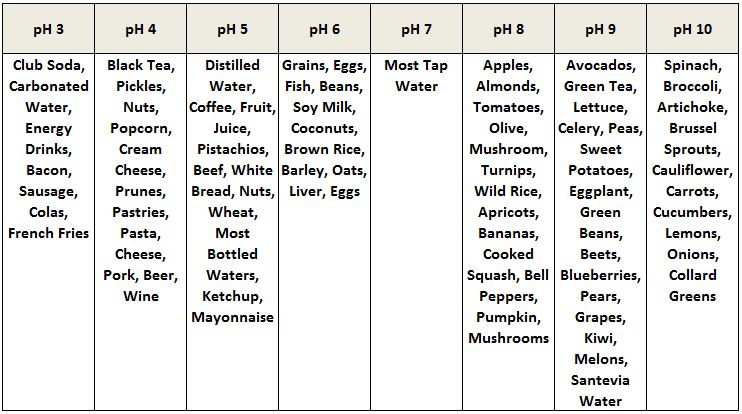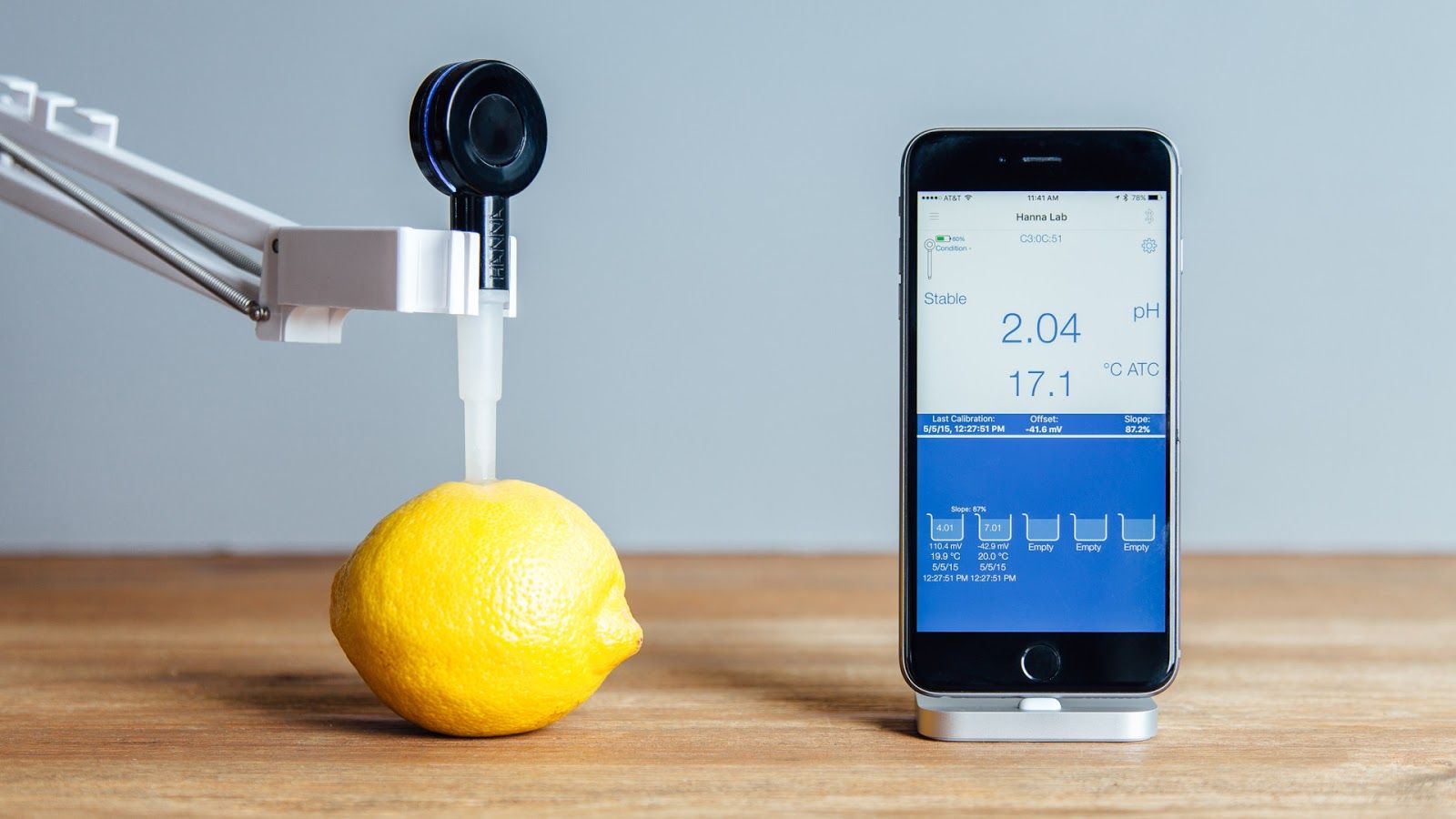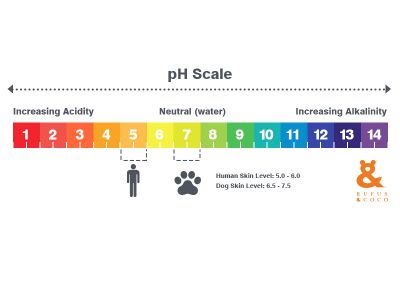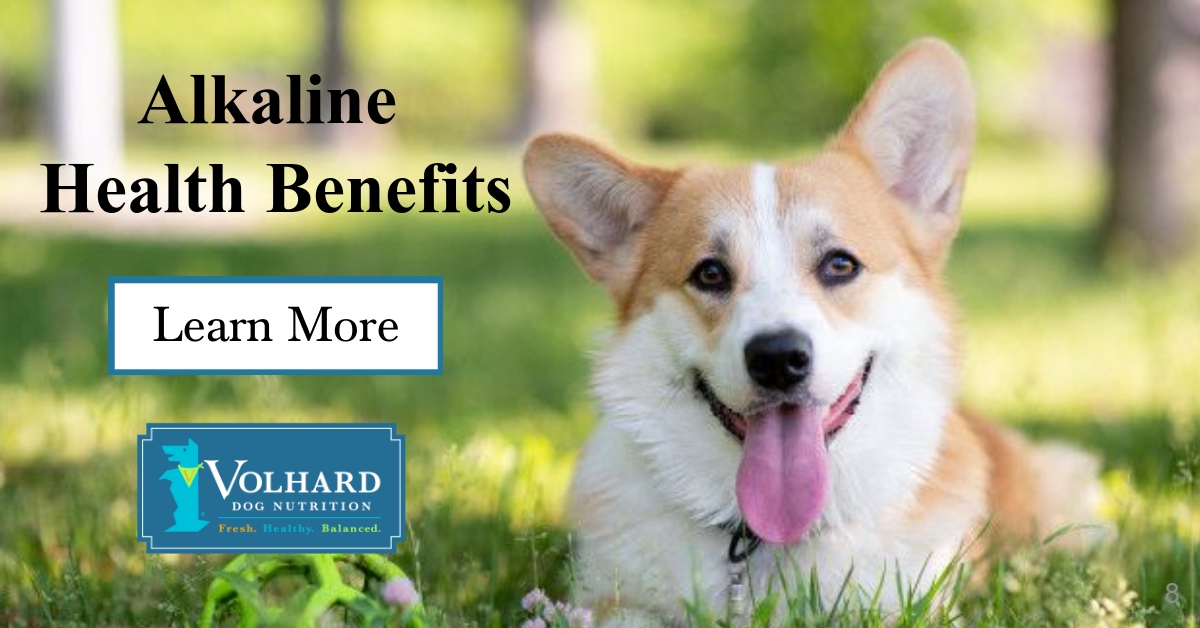Alkaline diets: What does that mean and why does pH matter so much to your pet’s health?
Posted by Jennifer Carter on Nov 7th 2019
You may have heard that an alkaline diet could be the best way to achieve superior health. This
widely talked about eating plan consists of consuming strictly alkaline-promoting foods regularly,
and eliminating acid-forming foods from your diet completely. The alkaline diet is primarily
plant-based and avoids sugar, dairy, wheat and other high-gluten grains as well as an excess
consumption of fruits, while emphasizing fresh vegetables and vegetable juices along with
cruciferous vegetables and greens.
This style of eating changes the body's intracellular pH to come close to the ideal blood pH of
7.3/7.41 - a key metabolic accomplishment on the path to longevity whether you have cancer or
not! An alkaline diet based on vegetables and fruits is said to create a less-than-optimal
environment for cancer proliferation, while at the same time strengthens the immune function
and supports healthy cells in the body through improved nutrition. We all know that dogs are
carnivorous and need meat as their primary protein, but it is important to learn how important
vegetables in the right amounts even though not required, can help a dog be healthy!
Note: We are not discussing the dog’s gastric pH which should be around 2. The claim that
kibble fed dogs actually have neutral or alkaline gastric pH values is completely unsubstantiated
and verifiably false. An alkaline or neutral gastric pH would not be able to digest raw OR kibble,
and would result in severe malnutrition.
These health benefits aren’t just limited to humans. By reducing the amount of acid-forming
foods you feed your dog, and increasing alkaline-promoting foods, you could be encouraging
significant improvements in his/her overall health and well-being. Alkaline diets for dogs are said
to reduce the risk of kidney problems, liver problems and diabetes, among other benefits. It is
about balance because acidic foods cannot be eliminated completely.
The pH scale ranges from 0 to 14, with lower numbers being more acidic and the higher
numbers being more alkaline. The goal is to keep pH levels at seven which makes it easier for
the stomach to digest beneficial bacteria and enzymes while breaking down food. Thus, keeping
the body free of unwanted pathogens and balancing the pH levels to prevent acidosis or
alkalosis from occurring. When the pH levels are off-balance, whether they are too low or
too high, serious health conditions can occur.
What if the diet is too acidic?
Metabolic acidosis is a condition that occurs when the body becomes too acidic. Acidosis is
common among dogs with complications such as diabetes and kidney disease. Kidney disease
can make it very difficult for the body to excrete the acidic compounds that are found in kibble
and canned dog foods. Dogs who consume a dry food diet tend to have a gastric acidity level at
around a 2 on the pH scale. Prolonged acidity levels to this degree can cause irreversible organ
damage and future complications. If the diet is too acidic, you can see mucus in the stool.
What if the diet is too Alkaline?
Diet is always the first place to look when your pet is experiencing urinary distress. Urine pH
imbalance is a common cause of urinary dysfunction. A urinalysis will determine the pH of your
pet's urine. This will help in deciding if pH is a contributing factor. It will vary based on your pets'
age, species, diet and health status. Generally, a slightly acidic urine pH is ideal (between
6-6.5). A balanced raw diet is the best place to start since it will naturally correct the urine pH of
most animals' urine. If raw diet isn't possible, a home-cooked diet is the next best thing, followed
by a canned diet. Moisture in food is also important because if an animal is not properly
hydrated, they are more susceptible to infection and disease. A too alkaline diet produced ‘itis’
or inflammatory diseases - arthritis, otitis etc.
The Volhard Rescue diet is an ideal way to feed alkaline based ingredients! Volhard Diets in
general, by not having the protein chosen for you allows you the freedom and flexibility to
change the protein to meet the health needs of your dog. The vegetables are dehydrated but
are still raw.
The basis of the Rescue diet resides in the fact that beneficial enzymes in food (proteins that aid
in necessary chemical reactions in the body) are destroyed by cooking. Some of these crucial
enzymes are obtained from outside the body, so if they are destroyed, your dog’s bodies then
struggle to digest and cannot absorb the maximum amount of nutrients required to thrive. Raw
fruits and vegetables promote alkaline balance, which is far more desirable from a health
perspective. Cooking at high temperatures alters the pH of vegetables from alkaline to acidic
and breaks down starch, therefore increasing sugar content in foods- just think of
caramelization.
What Is an Alkaline Diet for Dogs?
By feeding your dog foods that are above 7 on the pH scale, like kelp, parsley and alfalfa, you
are promoting a proper pH balance in their body, leading to good health and natural healing.
The fluid in a dog’s body is slightly alkaline, and if pH levels of their blood, lymph and
cerebrospinal fluid reach an acidic level, dogs risk contracting degenerative disease in the
tissue.
Volhard Dog Nutrition uses alkaline based herbs, oils and other ingredients in their diets. pH
balance is what is important and the overall pH of the food -based on the choices of
ingredients- is the key! Volhard uses alkaline-promoting foods in the diet in their raw state,
while all the while balancing acidic foods with a pH lower than 5.2 like beef, pork, and eggs to
reach an overall healthy pH. You must be very careful when choosing a food because if that
diet adds a mineral pack to the food instead of getting those minerals using a whole foods
approach, you will see an increase its alkalinity, but this process could create too alkaline food
causing crystals in the urine, which can lead to kidney stones.
Note: The flesh of animals prior (this would be prey animals if your dog was still in the wild) to
slaughter has a pH value of 7.1. After slaughtering, some of the glycogen in the meat turns into
lactic acid. As a result, the pH value is lowered. The increasing acidity of the maturing carcass
varies in its speed, depending on a number of factors such as type of animal, breed, rearing
characteristics and treatment of the animal prior to slaughter. Beef normally reaches its lowest
pH value of 5.4 to 5.7 at 18-24 hours after slaughter. After the lowest pH level is reached, the
pH starts to rise again slowly but steadily. By the time it reaches a pH of 6.5, it is starting to
decompose. Pork already reaches its lowest pH value of 5.4 to 5.8 at 6-10 hours after slaughter.
Here are some of the benefits associated with an alkaline diet for dogs:
1. It mimics your dog’s natural ancestral diet – wolves ingested the organs and stomach
contents in addition to muscle meat on their prey (stomach and intestines are highly
alkaline).
2. An alkaline environment in the body enables the blood to absorb more oxygen which is
then transported to the tissues and organs.
3. More oxygen in the blood means less damage form anaerobic activity – this means less
muscle fatigue and slower aging.
4. It helps prevent the development and progression of chronic illnesses that can develop
into serious and life-threatening disease.
Here is a partial list of foods and where they fall in pH:

Note: List Not Dog Specific - some foods on this list should not be fed to dogs
When feeding your dog, keep in mind that a proper water source is essential for supporting an
alkaline diet. Bottled water tends to be acidic, while tap water is loaded with harmful chemicals.
When choosing a water source for your dog, look for Ionized Alkaline water, which can increase
your dog’s immunity to sickness and health challenges, and help detoxify his/her symptoms.
By feeding Volhard Dog Nutrition diets to your dog, their urine will undergo a transformation
from too acidic urine (which you can see in the lawn burn where they pee) to slightly alkaline
urine.
Other Benefits of an Alkaline Diet for Dogs?
Feeding dogs a more alkaline-based diet should put more oxygen in the blood, minimize cellular
degeneration, settle digestive upsets, and reduce scratching and hot spots. It can also reduce
the signs of aging by reducing anaerobic activity.
The pH level is one of the most important balance systems of the body. Fluids in the body function to
provide digestion, lubrication, protection, nutrients and oxygen transportation. To perform these functions, the acid levels must be varied to match the bodily function. Overall levels of acidity or alkalinity
are measured on a pH scale and must be carefully controlled in each body. Tissues need oxygen to
remain healthy, but acidic environments prevent oxygen from reaching the body’s tissue. Volhard Dog
Nutrition uses herbs and ingredients along with our unique processing procedure to create an alkaline diet.
How do I test my dog to see if their urine is too acidic?
A urine pH level test is a test that analyzes the acidity or alkalinity of a urine sample. It’s a
simple and painless test. Many diseases, your dog’s diet, and the medicines your dog takes can
affect how acidic or basic their urine is. For instance, results that are either too high or low can
indicate the likelihood that their body will form kidney stones. If their urine is at an extreme on
either the low or high end of pH levels, you can adjust your diet to reduce the likelihood of
painful kidney stones.
In short, your urine pH is an indicator of your overall health and gives your doctor important
clues as to what’s going on in your body.You can determine the pH level of your dog’s urine with
a simple urine pH test strip. Test first thing in the morning during the dog’s first outdoor break of
the day and before eating. A pH of 7.0 is considered neutral and anything above it is
considered alkaline. The ph in the a.m. is always more acidic than in the afternoon. So time of
testing makes a difference. If your dog is already a Volhard diet eater, his/her pH should be
near or above 7.0. An alkaline diet has the same benefits for humans and dogs, and you can
also use the same pH test strips to monitor your own alkalinity. So while your dog is enjoying
Volhard Dog Nutrition, adding foods like lemons, green tea, asparagus, melons and sweet
potatoes to your own diet can help you achieve some of the same results in flavors more
appealing to the human palate.
How can I test my food’s pH?
Depending on the pH of the product and if you are working with a liquid, you may be able to use
paper pH strips (often referred to as litmus paper), or if working with a solid you may be required
to use a pH meter. Paper strips that measure pH rely on a color change in the paper to indicate
product pH. Paper strips can be used to measure pH if the product pH is less than 4.0. To test
Volhard Dog Diets once they are completely prepared, you would need a pH meter that can
read in a solid product. The meters come with different tips for different uses. You can use the
meter to test all kinds of products before you feed your dog:
Meat
pH levels can be used to determine the quality of meats. For example, pork with a pH of 5.6 to
6.0 is indicative of a pig raised well and stress free, while pork with a pH of 4.9 to 5.5 indicates a
pig raised poorly and/or stressed at slaughter.
Yogurt
Cultured milk must be brought to a pH value of 4.6 or lower before being cooled. Fruits added
must be of the same pH, or the yogurt needs to be further acidified to compensate for more
basic fruits.
Fermented Vegetables
In fermented vegetables, the growth of Lactic-acid bacteria can be gauged by pH
measurements. Fermented vegetables need to reach a pH of 4.6 or lower to inhibit undesirable
bacterial growth.
An Alkaline Diet and Cancer
There’s so much information surrounding cancer and diet that it can be hard to separate the
myths from the facts. That’s especially true when it comes to trendy diets. Some studies have
shown that acidic environments help cancer cells grow. So the idea is that a diet high in alkaline
foods (high pH) and low in acidic foods will raise the body’s pH levels (make the body more
alkaline) and prevent or even cure cancer.
Note: It should be noted that some of these are studies of cancer cells in a dish and do not
represent the complex nature of how tumors behave in the human or dog’s body. Food cannot
change the pH of your blood. The body’s pH is a very tightly regulated system. If you change
your dog’s diet, you may see changes in the pH of their saliva or urine because these are waste
products.
It would also make sense that if the body's pH is acidic, then the growth of cancer cells and
tumors would be encouraged. By eating mostly foods that make the body's pH more alkaline,
there would be less of a chance for cancer cells to develop and grow. So, by adjusting the diet,
it is actually possible to create a less hospitable environment for cancer cells, thus improving a
person's and dog's chances of experiencing good health.
Some studies have shown that using a nutritional mechanism to move the internal cancer cell
pH from the optimal mitosis range of pH 6.5 to 7.5, to above 8, which shortens the life of the
cancer cell. As described by its proponents, alkaline therapy neutralizes the acid waste of the
cancer which causes so much pain, interferes with the anaerobic fermentation of glucose that
starts the self-feeding acidic cancer wasting cycle called cachexia and in time, can induce
remission. If this theory of alkaline therapy holds true, it should be possible to address cancer
without chemotherapy, radiation or surgery and use alkaline therapy as a primary cancer
treatment.
This bold statement above comes from a somewhat abstruse body of research. In the 1880's,
Louis Pasteur published his work on cellular aerobic respiration and glycolysis. In 1931, Otto
Warburg won the Nobel Prize for his work on the metabolism of tumors and the respiration of
cells, which was later summarized in his 1956 paper, On the Origin of Cancer Cells. His work on
cancer expanded upon Pasteur's findings and described respiratory insufficiency and a cellular
metabolism of glucose fermentation as the primary trigger for cancer progression[vii].
Warburg's conclusions on cancer were much discussed in scientific circles, as they are
academically elegant, but were not accepted by most members of the scientific community
engaged in cancer research. Most cancer researchers in the late 1950's believed that the
anaerobic metabolism of cancer cells and their accompanying output of lactic acid was a side
effect or an adjunct effect of cancer, not a cause.
Conclusion: Proper pH could improve Your Dog's Quality of Life.
Tissues in the body are prone to disease of all sorts, including cancer, if they become deficient
in oxygen. To understand why, it is helpful to understand the nature of acidity and alkalinity.
Cancerous tissues are acidic, whereas healthy tissues are alkaline. Water (H2O) taken into the
body eventually breaks down into H+ and OH-. When a solution contains more H+ than OH- it is
acidic. When it contains more OH- than H+ it is alkaline.
When oxygen is introduced into an acidic solution it will combine with H+ ions to form water.
Oxygen helps neutralize acid, but acid also prevents oxygen from reaching the body's tissue.
Acidic tissues are devoid of free oxygen as tissue needs oxygen to remain healthy.
The pH scale ranges from 1 to 14, with 7 being neutral. Below 7 is acidic and above 7 is
alkaline. The blood, lymph and cerebral spinal fluid in a dog's body are designed to be slightly
alkaline at 7.0 – 7.5 (6.1 – 6.4 for cats). At a pH slightly above 7.4, cancer cells become
dormant and at pH 8.5 cancer cells will die while healthy cells will live.

What does acidity cause and why you want to avoid this state:
Note: The dog’s skin is the most alkaline of all species making it a perfect breeding ground for
bacteria (aka skin infections) if the pH is disrupted. If this happens, inflammation and infection
can occur due to over-drying and eroding of the epidermis (the outermost layer of the skin). A
dog’s epidermis is only 8-10 cell layers thick, whereas humans are 18-20 cell layers thick! The
dog’s skin is thicker overall, but the epidermis is very thin and susceptible to bacteria if it is
stripped away with improper ingredients that are not pH balanced for their skin.
References:
[i] Cassileth, Barrie R. et al, Herb-Drug Interaction in Oncology, pp. 158-159; Memorial
Sloan-Kettering Cancer Center, People's Medical Publishing House, Shelton, CT 2010
[ii] Clark, J., Hunza in the Himalayas, National Geographic, 72, 38-45; 1963
[iii] Brewer, A. Keith and Passwater, R. Physics of the Cell Membrane V. Mechanisms involved
in cancer; American Lab, 1975,-8, 37-45
[iv] Brewer, A. Keith PhD, Cancer, Its Nature and a Proposed Treatment, 1997; Brewer Science
Library; http://www.mwt.net/~drbrewer/brew_art.htm
[v] Ibid, p. 15.
[vi] http://www.greenmedinfo.com/blog/nutrition-inform...
[vii] Warburg, Otto, On the Origin of Cancer Cells, Science, February 1956, Vol. 123, No. 3191
[viii] Witting, Rainer and Coy, Johannes, The Role of Glucose Metabolism and
Glucose-Associated Signaling in Cancer; Perspectives in Medicinal Chemistry, 2007; 1:64-82.
Pp. 2; cited PubMed, http://www.ncbi.nlm.nih.gov/pmc/articles/PMC27549...
[ix] Cancer: The Mechanism Involved and a High pH Therapy, 1978 papers of A. Keith Brewer,
Ph.D. & co-authors, Copyright A. Keith Brewer Foundation, 325 N. Central Ave., Richland
Center, Wis, 53581.
[x] Griffin, G. Edward, World Without Cancer: The Story of Vitamin B17, American Media,
Westlake, CA 1974
https://www.mb-labs.com/wp-content/uploads/2014/09...
Wendy Volhard and Kerry Brown, D.V.M. Holistic Guide for a Healthy Dog, Howell Book House,
1995


